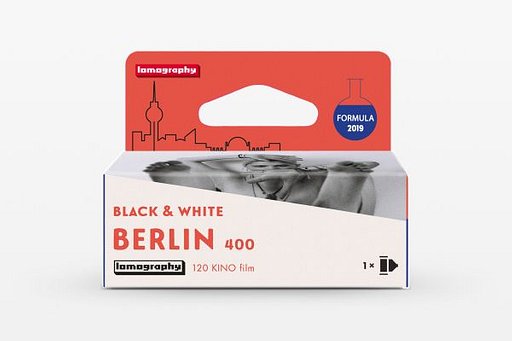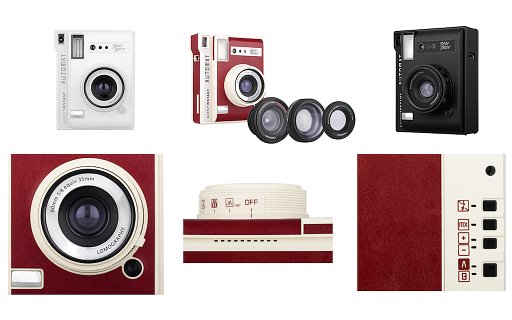@Yuhki_taguchi on His Love for Lomography and Learning to Shoot on Instinct
3 14@yuhki_taguchi is no stranger to the Lomography LomoChrome, B&W, and Color Negative film. Many of the 100 plus albums shared on his LomoHome make use of these creative film stocks. His albums are populated with photographs that mostly document his travels around Japan — with each of them logged and organized by number of roll, camera used, and location.
As someone who goes by a “no editing/post-processing” personal rule of thumb, and with his main choice of camera being the classic Lomo LC-A+, we thought it’d be interesting to learn more about @yuhki_taguchi’s analogue photography journey. He walks us through his collection of photographs taken over the years.
Favoring the 35 mm and 120 film format, @yuhki_taguchi, who is currently based in Kobe, Japan, initially joined the Lomography community in 2017 to connect with the global community of film photographers and see just how far and how vast one could push their analogue photography practice.
2024 marks @yuhki_taguchi’s seventh year of film photography. As a self-confessed loyal Lomo LC-A+ camera and LomoChrome film fan, we caught up with him in his hometown to hear more about his earlier years with the whole analogue photography system and technical set-up – starting with him commending the seamless built-in-camera functions:
“Think of it [LC-A+] as your smartphone camera you use to quick snap a photo of something in your daily life.”
Alluding to the 35 mm film camera’s lightness in being and ultra-compact build, he gushes about how it’s a tool that allows one to “easily shoot with gut instinct,” fully trusting in one’s creative vision and intuition.
Another one of the camera’s @yuhki_taguchi has added to his arsenal is the 120 film format Diana F+. When asked about what camera he prefers for certain events and occasions, he shared how these 120 cameras address more of the fun form function of his analogue photography practice – all starting with the unique look and 1:1 aspect ratio that comes with the Diana F+.
But beyond the purpose of taking photographs for fun and exploration on this medium format, he also shared how he associates the format more with “work”. He is much more intentional and thoughtful with each image, “as I’m more limited in terms of exposures,” he says.
Row 2: Diana F+ Camera, Lomography Color Negative 120 ISO 800
Despite his extensive experience with various Lomography film formats, @yuhki_taguchi admits that the Lomography Color Negative 120 ISO 800 is his go-to reliable film for any occasion. His personal favorite from the LomoChrome line is the 2021 LomoChrome Purple Pétillant 35 mm ISO 100–400. He suggests shooting this specific film stock in daylight and open spaces, as it enables you to explore a whole new world of colors. For black and white photography, the Lady Grey B&W 35 mm ISO 400 is a no-brainer, the soft grain and greyscale tones it’ll produce for your images will bring back a completely timeless and nostalgic feeling.
Furthermore, leaning more towards an array of vibrant colors (made possible by the help of the Lomography color-shifting film stocks) to match seemingly mundane sights, @yuhki_taguchi’s style of photography weighs heavily on patterns and motifs. After browsing through his wide range of photographs, it’s clear that specific elements such as leading lines, soft textures, and round structures make up most of his compositions — from silhouettes, bridges, tunnels, trees, and more.
“I think of my camera as an extension of my eyes. So I tend to photograph buildings, streets, and trees around me. That being said, my photography often incorporates leading lines. On the other hand, I also like casual, everyday daily snapshots too.”
Pulling from his arsenal of film cameras, @yuhki_taguchi also uses these cameras to build a collection of the same event, documenting it from different perspectives.
“Film is the foundation of photography, and I believe images from digital cameras are based on film (and somewhat mimic film). That’s why I find great joy and meaning in shooting film.”
“Even the ordinary, everyday scenes can look different if you shoot on film. That widens your perspective.”
On where he’s currently at in terms of his film photography practice, @yuhki_taguchi shares that he’s at the cusp of discovering even more techniques that push this practice further, such as learning more about photo curation and critique, and with all this starting with how he manages, selects, and curates his LomoHome.
So what’s next for @yuhki_taguchi? Documenting his changing city, Kobe.
“Kobe is now facing a lot of redevelopment in the city, where many old buildings were being demolished. I’m planning to photograph this city where many changes are being made.
With his hometown being a city he once described as where the old meets the new through structural preservation (where old architecture and buildings are well-maintained and preserved in their most pristine state) and its coexistence with some areas that are now full of pop, fashion, and media trends. Either way, Kobe is a city where there is always something new for you to discover.
@yuhki_taguchi is hoping to realize this personal photo series project on 120 film to purposefully capture the intricate details and rich history of the space — with him believing the medium format to be best in bringing these hopes to life.
2021 LomoChrome Metropolis 120 ISO 100–400
Thank you to @yuhki_taguchi for speaking with us on his film photography journey so far! View his growing collection of 35 mm and 120 photos over at his LomoHome.
เขียนโดย macasaett เมื่อ 2025-01-05 ในหมวด #gear #ผู้คน #120 #35mm #color-negative #japan #diana #lomo-lc-a #lomochrome





















































































3 ความคิดเห็น